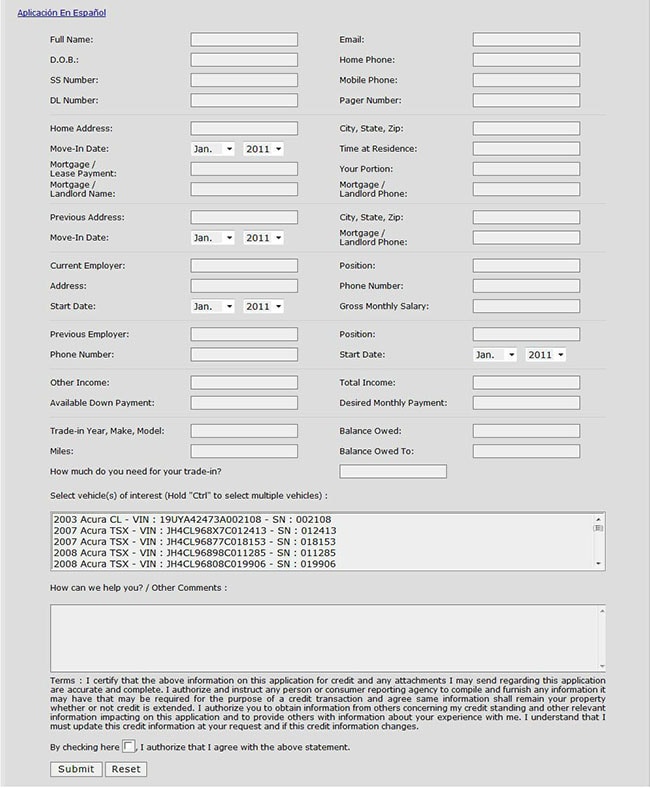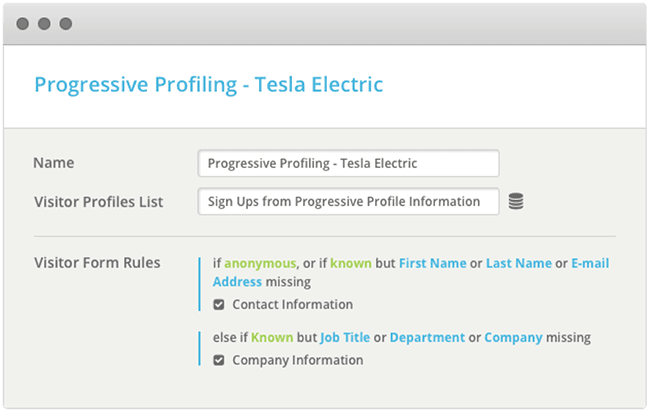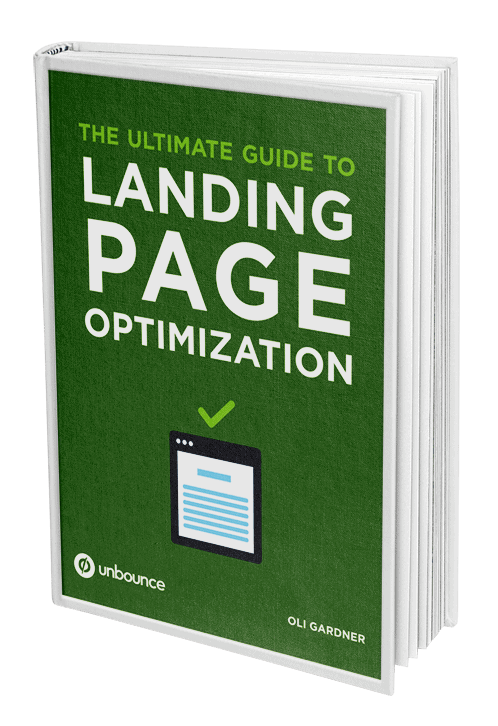
If your landing pages and web forms don't bring in usable prospect data, how can you follow up with prospects and nurture them into qualified leads? How can you pass them to sales for further development?
The struggle is real. As much as 40 percent of B2B leads suffer from poor data quality, and bounce rates for lead generation pages average between 30 and 50 percent. The problem here is two-fold:
- Prospects don't take the time to complete web forms accurately
- Prospects don't complete web forms at all
In many cases, marketers either ask for all of their lead data up front or build a custom form for each content asset based on what buying stage they think will match prospects' intent.
Neither approach is ideal.
On the one hand, you could scare prospects away by demanding too much information:

On the other hand, it'll take a lot of extra work to a build custom form for each of your content assets.
How can this be avoided?
Progressive profiling is a lead acquisition technique that involves requesting one or two pieces of information at a time, starting with basic firmographics (e.g. company size, job title, industry) and leading into deeper, more targeted questions later in the relationship.
Done correctly, it can help you increase conversion rates and lead accuracy by lowering the psychological barrier to form submission - all while keeping forms simple for a better overall user experience.
Progressive profiling case study
Countless B2B organizations are already using progressive profiling to improve their conversion rates and the quality of their data profiles. The Eaton Corporation, a power management company based in Dublin, Ireland, used progressive profiling to improve engagement with a recent campaign aimed at IT professionals.
With the help of Oracle's Marketing Cloud, they combined dynamic form fields with a personalized offer and brought in more than 5,000 new prospects… with 48 pieces of information for each. This surpassed their original goal by 276 percent.
So how exactly does progressive profiling work?
Instead of trying to build a complete lead intelligence profile from a single interaction or build a dozen different forms, you use marketing automation and dynamic web forms to request only the information you lack.
Here's an example of how the process could work:
- A prospect visits your website and downloads a whitepaper.
They submit their name, email address and company name through your web form.
- After receiving a few drip emails, the same person clicks a CTA to register for a webinar.
A dynamic web form for now asks for their industry, company size and a custom question about their software needs. Dynamic web forms present unique fields to each prospect based on the information you already have (or don't have) in your database.
- Not long after the webinar, the lead requests a video demo of your product.
You now ask them to specify a budget range and implementation time frame.
You'll need to set up rules for progressive profiling in your marketing automation platform. Most systems from leading vendors (Pardot, Eloqua, Marketo, HubSpot, Act-On) provide some kind of dynamic web form feature, although it's not always labeled as such.
Here's an example from Act-On - pay special attention to the “Visitor Form Rules” field:

As you can see, Act-On uses “if + then” rules to make sure no lead capture forms appear redundant to the prospect; you only want to ask for the pieces of information you don't have.
When should you use progressive profiling?
It may seem like a cure-all solution from the outset, but progressive profiling isn't always the best choice.
Not every prospect or lead will interact with your content frequently enough to move through a multi-stage lead capture process. According to a study by Demand Gen Report, only 38 percent of buyers view more than four pieces of content from the vendor they ultimately choose.
Worst case scenario: a lead only completes one web form, and you only get their name and email address - hardly enough to constitute an MQL (marketing qualified lead). In light of this reality, marketers should consider when and why they should employ progressive profiling:
- If the goal is to gradually convert casual site visitors into sales-ready leads with a series of escalating offers, it's probably a safe bet.
- But what about visitors who are already in the decision stage of their buying process? If they click a bottom-funnel CTA, do you want to squander the opportunity by only capturing basic info, such as that you might capture for a newsletter subscriber?
Of course not. Even if your initial conversion rate rises, your final conversion rate (after a couple nurture emails, another offer, another form) will be the same, or even lower.
Here's the short version: you shouldn't apply progressive profiling to all of your content campaigns just because it seems intuitive.
Instead, take a hybrid approach:
- Build more extensive web forms for bottom-of-the-funnel assets and offers, and use progressive profiling to make sure you don't request the same information twice.
- For your first-time visitors and blog subscribers, the barrier to entry should still be low, but if there's an opportunity to capture a qualified lead from a single touch point, take it.
The challenge
The challenge of lead acquisition is similar to the challenge of the sale: you must convince people that your offer (product/service/content) is worth some kind of investment (money/time/information).
While progressive profiling doesn't necessarily improve your value proposition, it does lower the psychological barrier to entry. By minimizing your “asks” and spacing them out over time, you can build incremental trust with prospects and leads, which adds up to higher conversion rates and more new customers.
Just remember to keep one thing in mind: while progressive profiling is a great technique, it won't carry your inbound lead generation efforts on its own. As with any campaign, there are many moving parts and they all must work in concert. To get the most out of progressive profiling, make sure you invest at least as much energy into optimizing your awesome content and the landing pages that go with them.

No comments:
Post a Comment